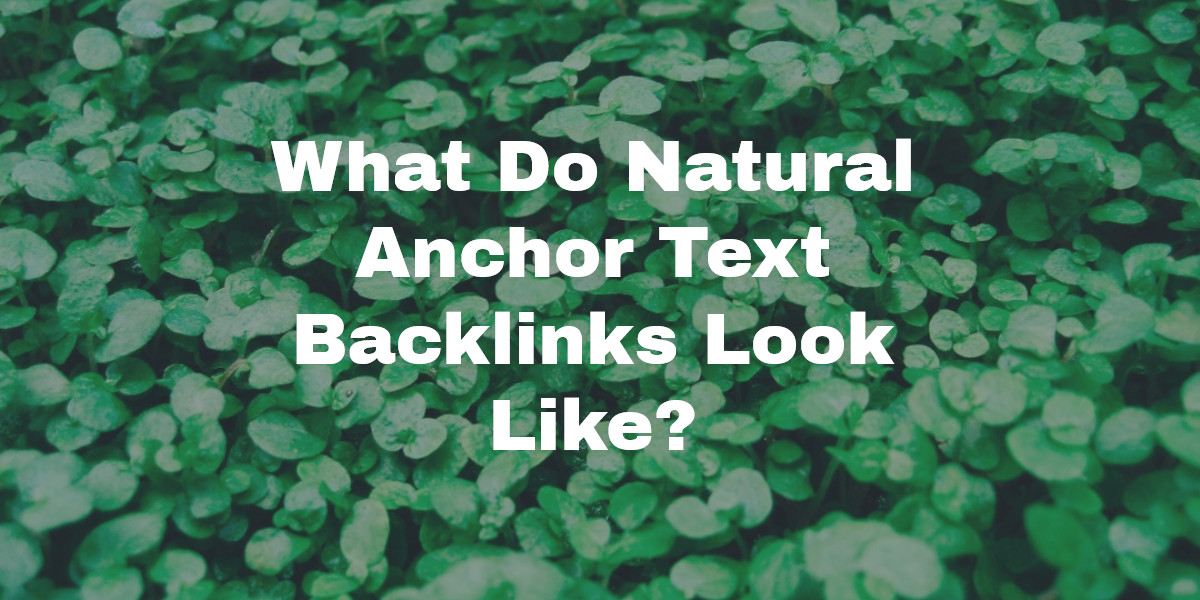A site that I established in 2001 has several popular pages. Over the years, many of the pages accrued hundreds of natural inbound links. I had absolutely nothing to do with these links, they were 100% natural. In fact, I didn’t learn of the source websites linking to my content until the I saw the referral traffic in Google Analytics or discovered the backlinks in Google Search Console.
Looking through the ways people naturally link to content has given me great insight as to how Google and other search engines should evaluate a natural backlink portfolio, and I believe that Google has gotten better at “identifying” natural backlinks in 2016 and 2017. That said, they have been using link diversity for much longer, I forget how long but this has been common knowledge since 2008, maybe earlier.
Examples of natural anchor text
Let’s say that you have a page called “How To Remove a Computer Virus” and the URL is http://example.com/virus-removal.html.
Lots of link builders will repeatedly link to a page and ensure the anchor text is “How To Remove a Computer Virus”. That is a good way to get a site penalized. Maybe this isn’t the greatest example, but if you have 50 links to your site for “Boston Lawyer” I would be afraid.
Around 2007 or 2008 most link builders began diversifying anchor text. In those cases they’d make the anchor text “Removing a Computer Virus” or “Computer Virus Removal” or “How to Get Rid of Malicious Software”.
I believe that post 2016 Google is devaluing some links when an abnormal amount of links use similar anchor text. These days Google can look at the article and determine the topical relevance of the link by the text preceding it, the content of the page it is on, and the context in which it is used. The anchor text itself plays MUCH less of a role now than it did a decade ago, and people trying to manipulate it often do more harm than good. Google applied for patents for some of these methods back in 2005.
If you’ve always built links and never received natural links to great content you likely have no idea what natural anchor text looks like.
So, here’s list:
- The URL only. Some people call this a naked link, and it is simply the URL. In this case, the linked text has no anchor at all: http://example.com/virus-removal.html. This is a very common natural link, and is seen often in forums.
- “here”. This is a very common occurrence. Someone could write an article about how they removed a virus from their computer and in their article they’d just say “I followed the directions here”.
- “article”. Same as above.
- Page title. In this case, the anchor text would be How To Remove a Computer Virus.
- Domain name. In this case, Example.com.
- Text from a sentence within the article. In this case the anchor text may look like “use a antivirus program“. Some journalists link like this.
- Page title variation. Just like link builders like to do, the text could vary and be something such as “removing a virus“.
What do your links look like?
Some of this may not matter in a niche that is not cutthroat, but in very competitive niches, you need a diverse backlink portfolio if you’re building links instead of obtaining them naturally.
- Google “Pure Spam” Penalty Deindexes Sites March 6 2024 - March 12, 2024
- What Happened to ChicagoNow.com? - August 30, 2022
- The December 2021 Google Local Pack Algorithm Update - December 17, 2021





Hey Lin this was a very helpful post! Thanks so much for sharing these backlink tips. I will definitely see how they work for me.
Hey Lin this post will definitely help me with improving anchor texts and backlinks! I really appreciate you sharing your knowledge. Now it’s time to practice it 🙂